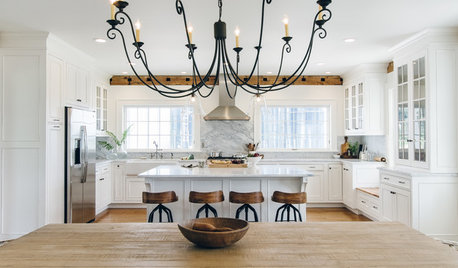BAck to Eden/wood chips vs no mulch experiment results
elisa_z5
11 years ago
Related Stories

GARDENING GUIDESThe Art of Green Mulch
You can design a natural garden that doesn’t rely on covering your soil with wood and bark mulch
Full Story
COLORSpeed-Dial Color Selection to Get the Best Result
You’ve belabored your color decisions and are still stuck. Here is how to evaluate your space and make choices that are right for you
Full Story
GARDENING GUIDESNew Ways to Think About All That Mulch in the Garden
Before you go making a mountain out of a mulch hill, learn the facts about what your plants and soil really want
Full Story
GARDENING GUIDESGarden Myths to Debunk as You Dig This Fall and Rest Over Winter
Termites hate wood mulch, don’t amend soil for trees, avoid gravel in planters — and more nuggets of garden wisdom
Full Story
KITCHEN DESIGNKitchen of the Week: Double Trouble and a Happy Ending
Burst pipes result in back-to-back kitchen renovations. The second time around, this interior designer gets her kitchen just right
Full Story
REMODELING GUIDESPro Finishing Secret: Aniline Dye for Wood
Deeper and richer than any stain, aniline dye gives wood stunningly deep color and a long-lasting finish
Full Story
WHITE KITCHENS4 Dreamy White-and-Wood Kitchens to Learn From
White too bright in your kitchen? Introduce wood beams, countertops, furniture and more
Full Story
KITCHEN CABINETSGet the Look of Wood Cabinets for Less
No need to snub plastic laminate as wood’s inferior cousin. Today’s options are stylish and durable — not to mention money saving
Full Story
TILETop Tile Trends From the Coverings 2013 Show — the Wood Look
Get the beauty of wood while waving off potential splinters, rotting and long searches, thanks to eye-fooling ceramic and porcelain tiles
Full Story
GARDENING AND LANDSCAPINGChoosing a Deck: Plastic or Wood?
Get the pros and cons of wood, plastic, composite and more decking materials, plus a basic price comparison
Full Story






coralb
nc_crn
Related Professionals
Ashburn Landscape Architects & Landscape Designers · Saint Louis Park Landscape Architects & Landscape Designers · Seabrook Landscape Architects & Landscape Designers · Severn Landscape Architects & Landscape Designers · Alpharetta Landscape Contractors · Americus Landscape Contractors · Matteson Landscape Contractors · Mequon Landscape Contractors · Merced Landscape Contractors · Post Falls Landscape Contractors · South Lyon Landscape Contractors · Tavares Landscape Contractors · Vashon Landscape Contractors · Winston-Salem Driveway Installation & Maintenance · Crestwood Driveway Installation & Maintenancevaherbmom
pnbrown
elisa_z5Original Author
pnbrown
oliveoyl3
joegreenjeans
pnbrown
yukkuri_kame
joegreenjeans
emgardener
Cincinnati